I’ve been afraid of tackling off camera flash photography for a long time. This past year I challenged myself to dive in and see why so many photographers can’t live without it! Don’t get me wrong, I LOVE natural light and it’s what I primarily shoot. But there are times when available light is poor quality and I simply need more to make a photo pop! When balanced correctly with your available light, flash can coexist beautifully to enhance your images.
*Post contains affiliate links. Thanks in advance for supporting Click it Up a Notch.
Straight out of the box, a good place to start with your external flash is by practicing bouncing it and using TTL mode. Check out Laurie’s post Speed Light Photography for Beginners where she shares her first experience with her flash. Once you are comfortable with bouncing and TTL mode, there’s a whole new world of possibilities available to you by operating your flash off camera and in manual mode!
Some of my favorite advantages of off camera flash photography (OCF):
- You’re not limited to the light that a window is giving you, or a certain time of day where there’s perfect light. You can shoot mid-day, after peak sunlight hours or on a dark, overcast day.
- Flash makes colors pop on a gray, flat overcast day.
- By manipulating the flash and changing its position you can get a gorgeous shaped light around your subject.
- You can correct bad lighting or color casts with flash.
- You have control over ambient exposure i.e the sky AND the light on your subjects.
- You can put the light in places a bounced flash couldn’t go, like behind your subject or an obstacle for dramatic effects.
- OCF allows you to add light even if there’s nowhere to bounce.
I’m planning to do a series of posts on OCF because I can’t possibly cover everything in one post. In this post I’ll cover the basics of equipment and settings with example images of how I used those settings. In my next posts I’ll cover things like color correction gels, modifiers (i.e. diffusers and soft boxes), different types of light, and various creative ways to use OCF.
ESSENTIAL EQUIPMENT TO GET STARTED WITH OFF CAMERA FLASH PHOTOGRAPHY
-
No.01A Flash
There are many types of speedlights out there. They range from $30 for off brands to $500-$600 for top Nikon or Canon versions. I wouldn’t recommend buying one for less than $150 as they may lack reliability and important features you will need. I have the Nikon SB-910 and highly recommend it. Or a less expensive option and great for beginners is the Nikon SB-700. If you are a Canon user, the Canon Speedlite 600 EX-RT is fantastic as well.
Features to look for:
– A rotating head so you can angle your flash the direction you want.
– Consider whether it has TTL and/or ability to use it manually. Both come in handy at different times.
– Make sure it’s compatible with your camera.
-
No.02Wireless Trigger and Receiver Set
The transmitter mounts onto the hot shoe of your camera, the receiver attaches to your flash. This is how your camera communicates with your flash. I have the Yongnuo RF-605 N Wireless Flash Triggers, which are perfect (and affordable) for beginners because they are easy to use. Radio Popper and Pocket Wizard triggers are popular (but pricey) among professionals because they allow you to control your flash power remotely from your camera (rather than walking over to your flash to change the settings).
-
No.03Ni-MH Batteries for your Flash and Triggers
Flash uses a ton of battery power, so plan on going through a lot of batteries! You can save on cost by buying rechargeable. They also hold their charge longer than conventional batteries. In fact, they can hold up to 75% of their charge for a year or so! I use Eneloop Pro high capacity Ni-MH rechargeable batteries. This brand is the great for flash and lasts long. They also hold their charge even if your camera sits unused for a few weeks.
-
No.04Umbrella Mount
This is how you connect your flash to your light stand. One end screws onto your stand, the other holds a cold shoe that you can mount your flash with the trigger onto.
Don’t be fooled by the many types you see out there. They all do the same thing! There is a small hole in the center where you can put an umbrella or other modifier. I use this Impact Umbrella Mount and this light weight Westcott light stand. I wanted to be able to move it around my house easily. I also got this Impact Saddle Sandbag to weigh it down in case I want to use it outdoors with wind. If you want something a little more sturdy, I recommend this Manfrotto Basic light stand. Once you start using umbrellas or softboxes you may want a sturdier stand.
-
No.01TTL and Manual Modes
Your flash has modes just like your camera. This is how you choose the amount of power you will get from your flash.
TTL (Through the Lens) is when your flash emits a preflash that assesses the scene and decides how much light it should emit. TTL is beneficial when you or your subject is moving quickly and distances or ambient light is changing constantly. You let the flash do the thinking.
In Manual, you as the photographer decide how much light your flash emits. Manual power starts at 1/1 (most powerful) and can go up to 1/128 (least power). I prefer using my flash manually because it gives me the most control over flash intensity. Sometimes the flash gets confused in a high contrast scene and may not give you the right amount of light in TTL.
-
No.02Exposure Compensation
In TTL you can adjust the amount of light by +/- 1/3 stop increments up to 2 or 3 stops. Every stop halves or doubles the amount of light. It’s similar to exposure compensation in P or A mode on your camera. You can dial it up or down depending on how much light you need.
-
No.03Zoom
You will also see on the back of the flash a number like 12mm, which refers to how narrow or wide your beam of light is. Your camera will read the zoom number on your lens and will automatically set your zoom/mm on the back of your flash. However, there will be times when you will want to change that number manually. For example, if you need more coverage side to side you would choose a wider mm setting. A narrower beam of light will be more powerful and will reach farther.
-
No.04Aperture
You will also see an f-stop number like f/5.6 on your flash. The aperture is another way you can control the amount of light emitted. A lower f-stop number will give you more power.
SHOOTING/CAMERA SETTINGS
Once you have the triggers attached to your camera/flash and it is placed where you want it (or on a stand), you are ready to determine your settings!
With flash you have two different exposures to think about; the exposure of your background, and the exposure of your flash. Before you even turn on your flash you need to think about how much ambient light you want in the frame and how much light you want to add (ie. light on your subject). Shutter speed, ISO, and aperture all play important roles in achieving these exposures. Here’s a quick rundown on settings.
-
No.01Sync Speed
Set your sync speed, or shutter speed on your camera first. Your flash will have a maximum sync speed. Mine is 1/250. If you do not stay under your sync speed you will get a lovely black bar across your image like this outtake.
Hard lesson learned on this shot! I missed an important moment, when they popped a balloon to find out the gender of their 2nd baby, because I moved my sync speed up a stop by accident. On most cameras the black bar can be avoided by setting your shutter speed at least one stop lower than the maximum sync speed of your flash.
-
No.02Shutter Speed
It controls ambient light. It doesn’t affect your flash power. A slower shutter that stays open longer will let more ambient light in. But because a flash burst is very short, your shutter speed doesn’t affect the power of the flash.
When choosing your shutter speed ask yourself how much ambient light you want in your image? Do you want the sky to look the way you see it? Then choose a slower shutter speed i.e. 1/60. Do you want to darken it for a more dramatic look? Then raise it i.e. 1/200. But never go above your sync speed. Flash freezes motion as well, so as long the light from the flash is hitting your subject, they will still be sharp at a slower shutter speed.
You may have heard the phrase drag the shutter, which means using a slow shutter speed to allow more ambient light to enter the lens. Keep in mind, however, that if you drag the shutter and there is a lot of ambient light on your subject, it will affect them if they are moving. For example, in this next shot of my daughter her back foot is slightly “ghosting”. That is because there is ambient sunlight falling on that foot. The rest of her body is crisp because she had her back to the setting sun and I lit her front with flash. I’ve heard you can combat ghosting by increasing the camera’s sensitivity to around 800-1600 ISO. I still need to experiment with this.
Also in this shot I wanted to preserve the night sky, but still light my daughter. I had the flash sitting on a stand (with a diffuser) about 8 feet to the front/left of her. I set my flash to a lower power i.e. 1/64 so it wouldn’t blow her out. I lowered my shutter speed on my camera slightly to bring in the colors of the sky. As you experiment with flash you can also move it closer or further away from your subject to see how this changes where the light falls.
Here’s a comparison shot 10 minutes later where I exposed for her and used only natural light. I lost the colors in my sky. And lost the highlight and shadows that defined her form so nicely in the flash shot. Her eyes and much of her face look dark and flat as well.
-
No.03ISO and Aperture
Set these after you decide your shutter speed. Aperture controls the intensity of the light from your flash. A lower number i.e. f/2.8 gives you more power. If your flash is too bright, raise your aperture number i.e. f/16. It’s an easy way to adjust the power in camera without having to walk over to your flash to change it. However, if a shallow DOF/shooting wide open is important to the shot, than leave your camera settings there i.e. at f/2.8 and lower your flash power on the actual flash if it’s too bright.
ISO affects both ambient light and flash output. I usually tweak ISO last if I need to. It’s nice to be able to go up or down in ISO to control the intensity of the flash once all my settings are where I want them to be. A good example would be if you are shooting at ISO 400 and your flash is too bright and you can’t reduce it anymore, you could use your ISO to tone it down.
If you are looking for more power from your flash you can do 3 things: 1. Turn up the power on the flash, lower the aperture number in camera, or increase the ISO.
All this probably sounds complicated, but I promise you it’s just like learning manual mode on your camera. Once you learn what each setting does, it’s a matter of experimenting until it all clicks!
MAKING SENSE OF IT ALL
In this image of my nieces and nephews I had someone hold my flash about 8 feet in front and slightly to the right of me. I first set my shutter speed to 1/125 because I wanted to preserve the colors and exposure in the sky as I saw it. I then used my flash to light the kids. I set it to medium power, around 1/16 because I needed to make sure it lit the whole group from the distance it was at. Then I went up and down in my aperture in camera until I landed on f/4.5 for a good exposure on the kids. I took several test shots, then made small adjustments in aperture and ISO until it looked right.
The sun had just gone down and it was and overcast and gray. If I hadn’t used a flash, my ISO would be cranked up high (thus more noise) to get decent exposure on my subjects. I’d also have shadowed faces, and a white sky with no cloud definition. What I love about this image is the flash made the colors pop on an overcast day and I was able to light both a very dark skinned child and fair skinned kids evenly! If I had two flashes I would place the second flash behind them to create a hairlight to help separate them more from the background.
This image is an example of using flash as a subtle fill light indoors.
I set up my flash in a corner (see pullback) and bounced the light out of the corner/ceiling. It spreads beautifully and provides just a hint of fill. This is my favorite technique for indoor lifestyle shots because the light looks natural. There was a big sliding glass door at camera right that lit one side of him. He was quite a ways away from the door, so the other half of his face was shadowed. The fill light coming from the other side gave definition to his arm and face, which would otherwise be dark. It also lit the opposite side of the toys better. I set my aperture at f/4 because I needed enough power to bounce and reach to the ground, but still wanted a shallow DOF with a sliver of focus mainly on the toys.
Here’s a couple more shots using the same corner bounce technique.
Although there’s a hotspot on my daughter’s hair from the direct sunlight coming from the window, I let it slide to capture the moment. The flash was placed opposite the window, pointed up at the corner of the ceiling and bouncing back at them. I liked how the flash provided fill on their faces (since they were turned away from the window light) and defined the otherwise shadowed side of their bodies.
For this bath image I had my flash set high on a shelf in the corner, pointed to bounce at the ceiling/corner. I set my aperture number low (f/2) because I needed a lot of power to reach him and correct the yellow overhead lights that were present. Flash gives a daylight white balance and can be used to get rid of color casts and bad lighting as well! I also set my shutter speed to the maximum sync speed (1/160) because I wanted to let less of that yellowy tungsten light in and to freeze the movement of the water.
I hope this gave you a good intro to off camera flash photography and inspired you to learn more. I’ve experienced many “ah-ha moments” as I am experimenting with my settings! Although this may seem like a lot to take in, remember there’s many ways to do your settings. It’s all personal preference and a matter of trial and error until you get the look you want. Feel free to ask questions in the comments!




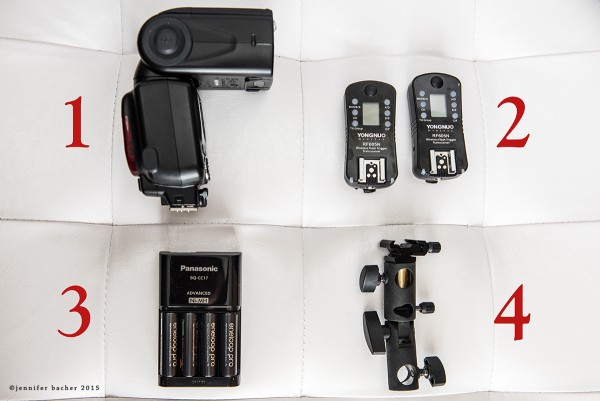
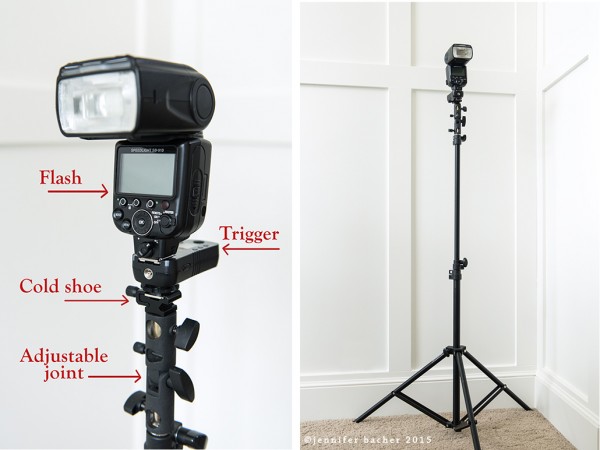
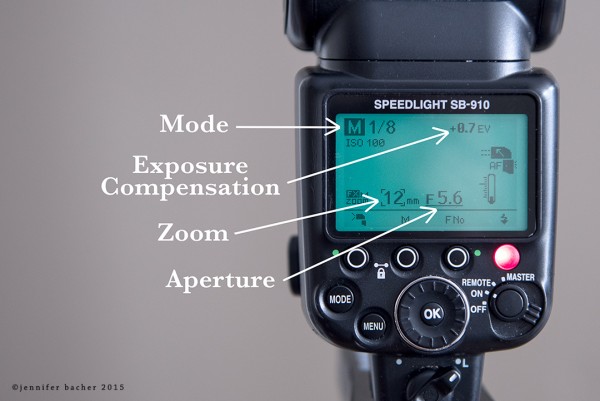



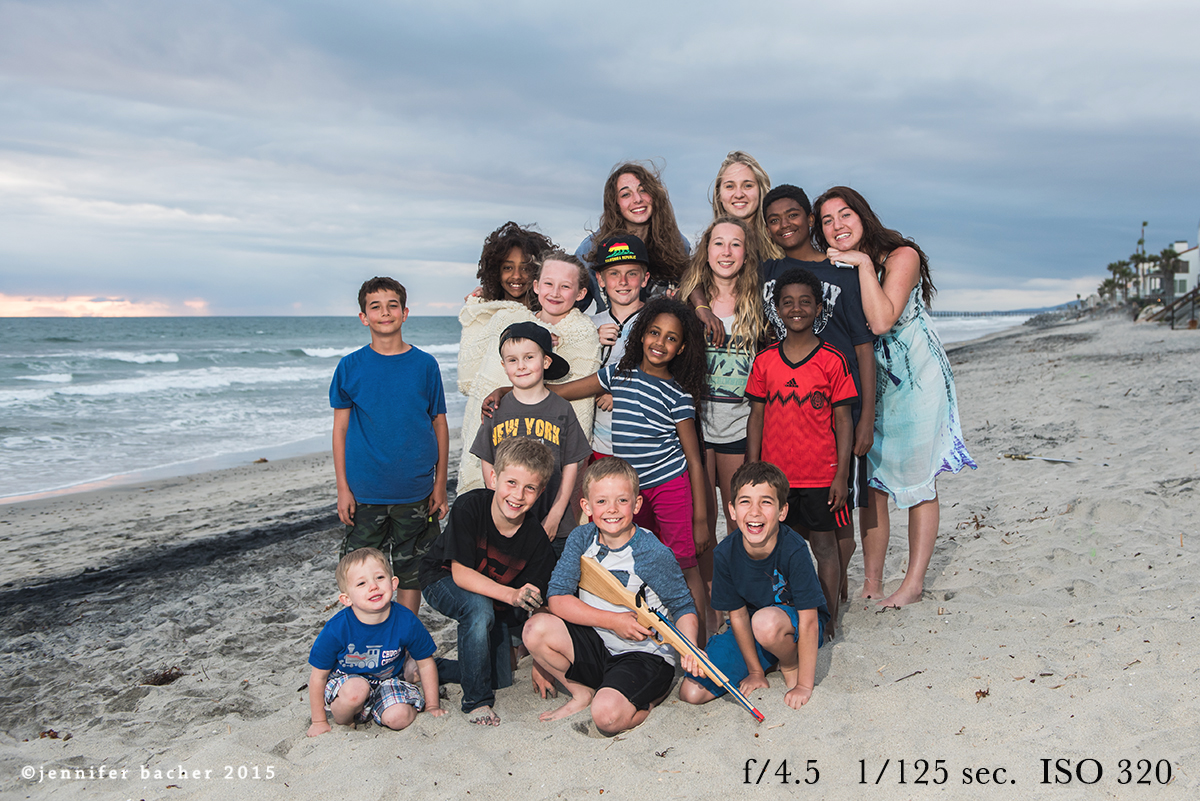
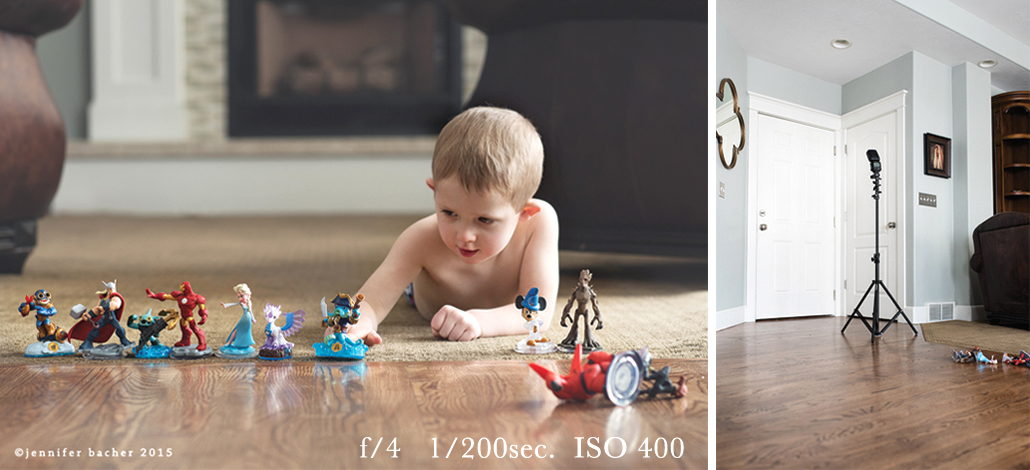


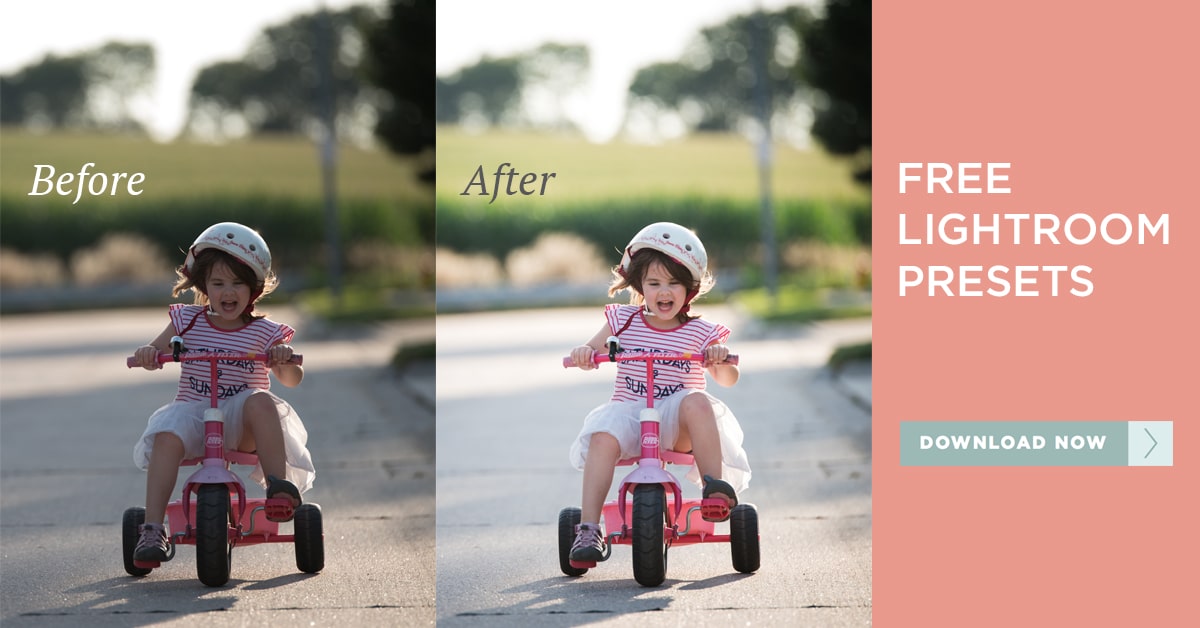






Thank you for this! I need to start experimenting. I just did a bathtub session for a 1yr old, & had to worry about correcting for yellow lighting in post. Not easy.
Thank you so much for all of your detail work! This is best explanation EVER, for beginners and off camera flash.
Awesome post! Very informative! I definitely didn’t understand all the numbers on my speed light’s display, but thanks to this tutorial I’m ready to play with my flash and see what all I can do. Now all i need is a remote trigger lol will definitely be on amazon looking at the ones Yongnuo offers.
Ahhhhh!!! This is SO helpful!! I’ve been using my mid-level Canon flash in a hit-or-miss fashion, and only recently tried it off of the camera. I am definitely going to try to bounce in the corner, AND I’m less afraid to use it outside! Thanks Jen!!
Thank you Jennifer for the great explanation. You really broke everything down so it is very understandable. I have done a little ocf in the past but you have inspired me to set up my equipment and practice again!
Very appreciative! Explained things well in a way I needed to read as a beginner! Best I’ve read yet!
Thank you thank you thank you!!! This is an absolutely brilliant piece! I feel like i finally understand it and cant wait to practice :)
Thank you so much for an Ahhh haaa moment! I have been so afraid of OCF. I have had it on camera and bouncing off the ceiling but have really wanted to understand OCF. You have pointed me in the right direction Thank you…
Thank you! This is a HUGE help to starting flash photography! This came in perfect timing as I was about to start playing around with it tonight!! Thank you for your time! Cannot wait to see more future helpful hints!!
Thank you for this! I am slowly truing to figure out flash. This was very helpful.
{I do wish the links you nicely included for products you use would open in a different window instead of taking me away from the blog}
Hi,
I am new here. I stumbled on your blog via Pinterest.
It’s lovely here, I’ve learnt quite a lot just spending an hour already. Keep it up.
Cheers!
This post helped me understand SO much! I’ve been wanting to try ocf (with speed light and triggers, etc) for a while but it seemed so overwhelming. I’m bookmarking this post right now! :)
You sold me on flash photography today :) I have SB800 for last one year but have not dared to use it as I did not know how to use it. Now I realize how I lost precious moments of my kids as there was not enough ambient light to take good pictures. I need to try more.
Can’t thank you enough.
Best wishes
Thank you – great post!
I am just getting the grip on some of this. Your article was great!! I have a concern with the flash being in the center of the pupil even with a diffuser on my flash and its off my camera, What could I be doing wrong??
Candace
Nice post – I was fascinated by the analysis – Does anyone know if my business could possibly grab a sample MN Continuing Education Reporting Form copy to work with ?
Thank you for this. I watch a lot of videos of the experts and this “One, Two Stop” up or down thing seemed like a foreign language. Now you have explained it in a way I can understand as I am not mathematically inclined or hyper technical. I seem to have an instinct about changing settings (ISO, Aperture, etc. ) but I haven’t mastered the theory or the terminology to actually grasp what I am doing.
Now I can.
Thank you.
thank’ you. ..so great post!
Thank-you, Jen! Great article!
Is there a website that works, or an e-mail where I could ask you a few specific questions? I’m quite new to the flash world and would like to pick your brain more than here.
I checked out http://www.jenniferbacher.com and got nothing!
Thanks so much for your help!
Scott S
Reading this in 2021 as a beginner, and it’s still just as helpful as it was when you wrote it. Thanks!
[…] probably a few things you’ve been waiting for just the right time for (aka procrastinating), like mastering off camera flash techniques, improving your Photoshop editing skills, or fully grasping how to shoot in Kelvin. Take […]
That you for this! I’ve only used the flash when it’s attached to my camera but after reading this, I immediately set up my two flashes around the room and began practicing. I am so ready for my next shoot because I definitely want to play around with moving the flashes to get different lighting.